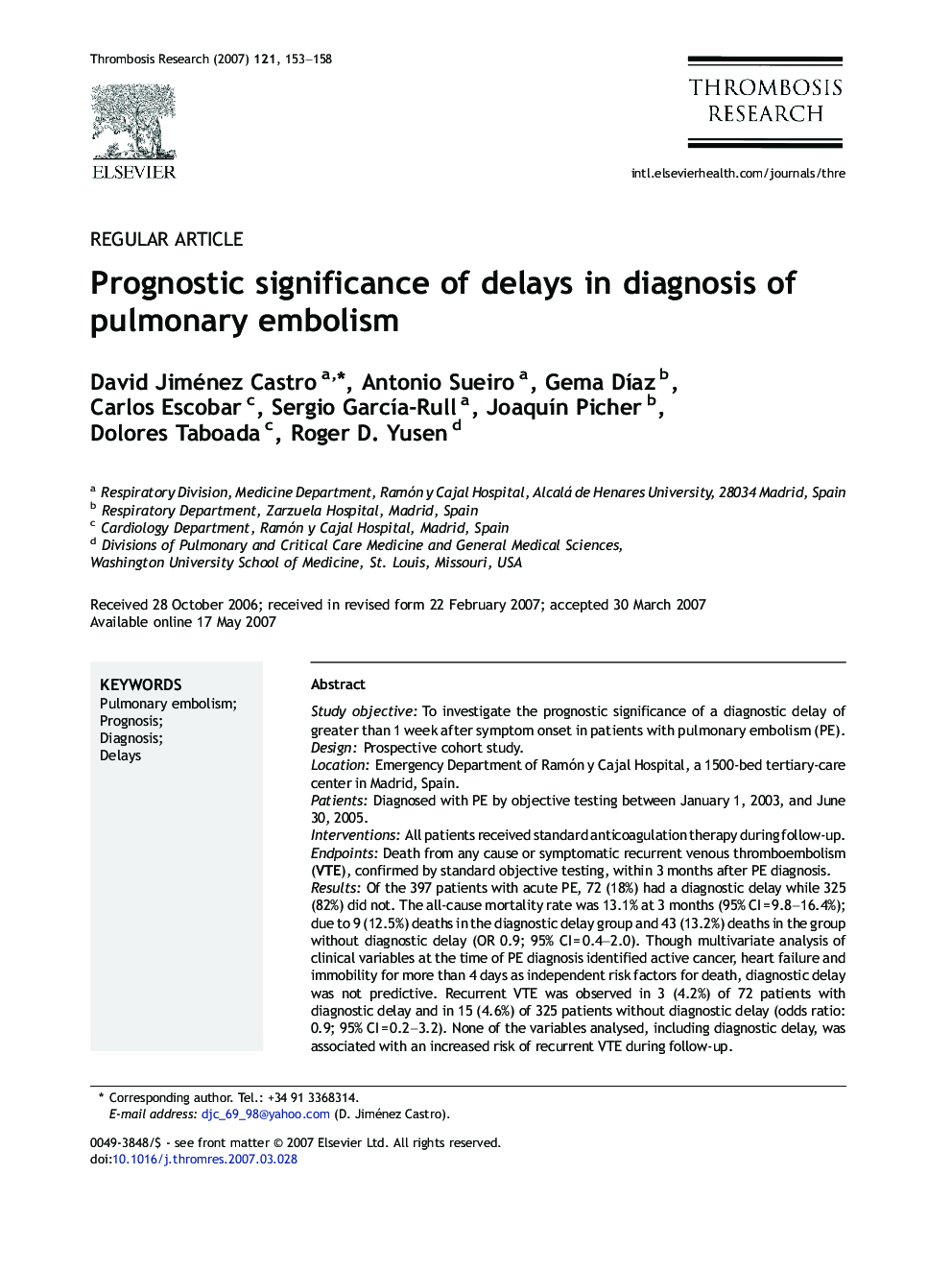| Article ID | Journal | Published Year | Pages | File Type |
|---|---|---|---|---|
| 3029892 | Thrombosis Research | 2007 | 6 Pages |
Study objectiveTo investigate the prognostic significance of a diagnostic delay of greater than 1 week after symptom onset in patients with pulmonary embolism (PE).DesignProspective cohort study.LocationEmergency Department of Ramón y Cajal Hospital, a 1500-bed tertiary-care center in Madrid, Spain.PatientsDiagnosed with PE by objective testing between January 1, 2003, and June 30, 2005.InterventionsAll patients received standard anticoagulation therapy during follow-up.EndpointsDeath from any cause or symptomatic recurrent venous thromboembolism (VTE), confirmed by standard objective testing, within 3 months after PE diagnosis.ResultsOf the 397 patients with acute PE, 72 (18%) had a diagnostic delay while 325 (82%) did not. The all-cause mortality rate was 13.1% at 3 months (95% CI = 9.8–16.4%); due to 9 (12.5%) deaths in the diagnostic delay group and 43 (13.2%) deaths in the group without diagnostic delay (OR 0.9; 95% CI = 0.4–2.0). Though multivariate analysis of clinical variables at the time of PE diagnosis identified active cancer, heart failure and immobility for more than 4 days as independent risk factors for death, diagnostic delay was not predictive. Recurrent VTE was observed in 3 (4.2%) of 72 patients with diagnostic delay and in 15 (4.6%) of 325 patients without diagnostic delay (odds ratio: 0.9; 95% CI = 0.2–3.2). None of the variables analysed, including diagnostic delay, was associated with an increased risk of recurrent VTE during follow-up.ConclusionsAmong survivors diagnosed with acute PE in the Emergency Department, we did not detect an association between a delay in diagnosis and an increased risk of death or VTE recurrence during the ensuing 3 months of treatment.
